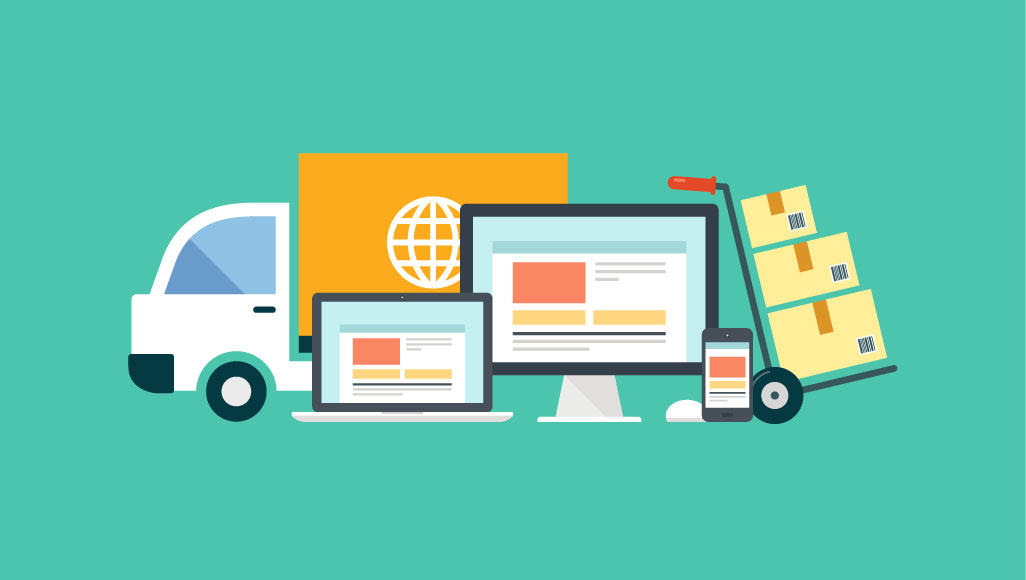Why is it essential to use order management software? Some people mistakenly think that the moment an online store visitor clicks “Buy now” button and confirms the order, their goal is achieved – the visitor turns into a buyer and the money gets into the merchant’s pocket. In fact, it is where the most crucial process, order fulfillment, starts. Managing to do it quickly and professionally will likely mean winning a loyal customer. However, it is easier said than done.
Order Management System Features
There is a whole range of order management features that a contemporary order management software offers, as follows:
· Customer profiles and shipping preferences
· Management of “do not ship” orders
· Price and quantity discount rules
· The capacity to use categories or other product attributes as shipping classes
· Shipping notification to the customer
· Automatic notification of new products to the customer
· Automatic notification of orders and invoices to the customer
· Customer notification
· Payment notification
· Automatic shipping notification to the customer
· Customer contact data management
· Customer personalization
· Automatic shipment notification
· Automatic tracking information notification
· Automatic order follow-up follow-up
· Automatic order follow-up follow-up
· Automatic order cancellation
· Automatic tracking information notification
· Automatic order follow-up follow-up
· Automatic order cancelation
· Automatic tracking information notification
· Automatic notification of new products
· Automatic order follow-up follow-up
· Automatic notification of new products
· Automatic shipment notification
· Automatic order follow-up follow-up
· Automatic tracking information notification
· Automatic notification of new products
· Automatic payment notification
· Automatic order follow-up follow-up
· Automatic shipment notification
· Automatic tracking information notification
· Automatic payment notification
· Automatic order cancelation
· Custom tax calculations
· Taxation based on countries or states
· Automatic order follow-up follow-up
· Auto generated invoices
· Auto generated shipping receipts
· Order confirmation or cancellation
· Automatic tracking information notification
· Automatic shipment notification
· Automatic tracking information notification
· Automatic order follow-up follow-up
· Automatic shipment notification
Any of these features is individually quite important. Together, they make your task, that is already facilitated by modern tools like Magento, much easier. If one of these features is missing from the solution you are using, you have certainly made the wrong choice.
There is no need to make the wrong choice.
Order management software is usually offered as part of a larger ERP or CRM software package. Thus, you can reap the above-mentioned features along with other valuable business software features. However, you need to be careful – what you pay is not always what you get. One example is a vendor who sells the “All-in-One” ERP package. It has a feature to “Manage your orders” – however, it is just a bare feature, just enough for the seller to have an advantage in similar auctions.
You know what to do.
Inteviews with Two Top-Level Developers of Order Management Software
One of the top-level developers of a leading software company (EarthSoft) and one of the top-level developers of an innovative start-up company (MapleFloor) were our guests. They both agreed to share their knowledge with us regarding order management software functionality, its common mistakes, the role of each individual feature in order fulfillment and the overall order management process and the main use cases respectively.
Order management software functionality
Order management software is a specific function of an ERP/CRM/Online Store management software package. It is not one of the core functions of an e-commerce website however it is still a very important one. It should support sales activities involved in the process of fulfilling orders. Some of those activities are: order entry, order follow-up, inventory management, stock access and shipping management.
Order management functionality includes three product attribute fields: product line, stock and pricing. Each of those fields can be used to segment orders based on a specific attribute. That way each order is personalized to individual customers and can be managed effectively. As an example, an order can be customized so that only specific products are shipped to the customer. The product line attribute field is a required field when you create or manage a product. This can help you decide whether a customer can purchase a product or not, based on their customer profile. The other two attributes are optional. A short description of how to use them follows:
· Stock. A status of each product in your inventory can be managed via the stock attribute field. Each status of the product can be mapped to a status of a shipment.
· Pricing. Usually, when a new order is placed by a customer with an existing product, the pricing is not affected. However, there are situations when you decide to apply a price change. This will be another feature of the order management system.
A common mistake in the order management software functionality is to handle order data in a spreadsheet or an Excel sheet. However, a custom, tailor-made solution can help you factor in a lot of beneficial features that automate the most basic tasks, so that you have more time for doing interesting, creative work. An example of such a feature would be auto-created tracking numbers.
A vendor who offers “All-in-One” ERP package who does not have an order management solution is making a common mistake.
Interview with Andrei Smirnov, Technical Director, EarthSoft Company
ERP & CRM Solutions
Question: How important is it to have order management functionalities in an ERP or CRM package?
Answer: It is essential to have an order management functionality in an ERP and CRM package, unless you have a separate order management solution, which is always more efficient. Even if your order management system is separate, the ERP/CRM product you are using should still manage products, customers and order data. That way you keep customers and products within the same system, which makes it much easier for you to analyze and report on the data in the future. Therefore, any ERP/CRM solution should provide at least these 3 functionalities, regardless of whether its main purpose is ERP or CRM/Business Intelligence.
Question: What are the features of a good order management functionality?
Answer: The features of a good order management functionality include support for fulfillment of all the processes involved in order management: order entry and editing; order follow-up; product stock access and pricing management; auto-created tracking numbers for your shipment. These are the six main features an order management functionality requires. The main purpose of an order management functionality, as opposed to information management functionality, is to fulfill orders based on customer order data and their profile.
Question: What’s the main mistake regarding order management functionality that we see in most ERP/CRM/Business Intelligence solutions?
Answer: There are two main mistakes in most ERP/CRM/Business Intelligence solutions. First, they get order management functionality for free. It is the standard functionality of first-level e-commerce products like open source Magento. Second, they do not have good order management functionality.
Question: Would you advise including order management functionality in an ERP and CRM or Business Intelligence solution when using open source systems and solutions?
Answer: Of course. Let’s say you must store order data, or work with product stock pricing data. You can make it work with an e-commerce website like Magento, but where would the information go? There would be complete chaos in the system. All the data would end up in a spreadsheet, and your system would lose its usefulness. Therefore, make sure you get a solution where order management functionality is just one of the many features offered.
Question: Do you have some advice for people who already have their own order management functionality in place?
Answer: They should still use the ERP/CRM and e-commerce functionalities. If they recognize those functionalities create value for them, they will continue to use them, even if they are separate from the ERP/CRM and e-commerce packages they have chosen. That way, they would get the most value from their integration solution. If you had a chance to implement the order management functionality in its entirety, you would get a real order management tool that would bring value to your business in every stage of the order management process.













